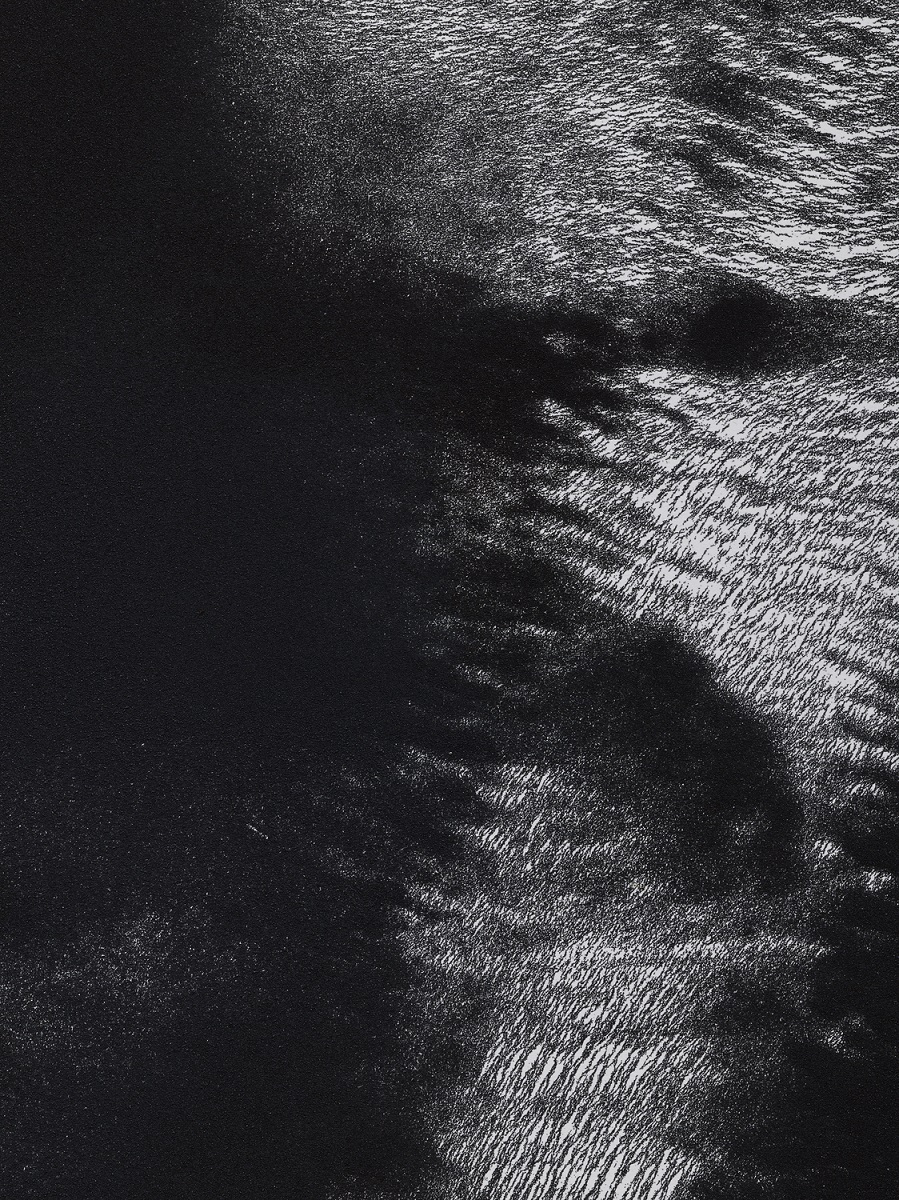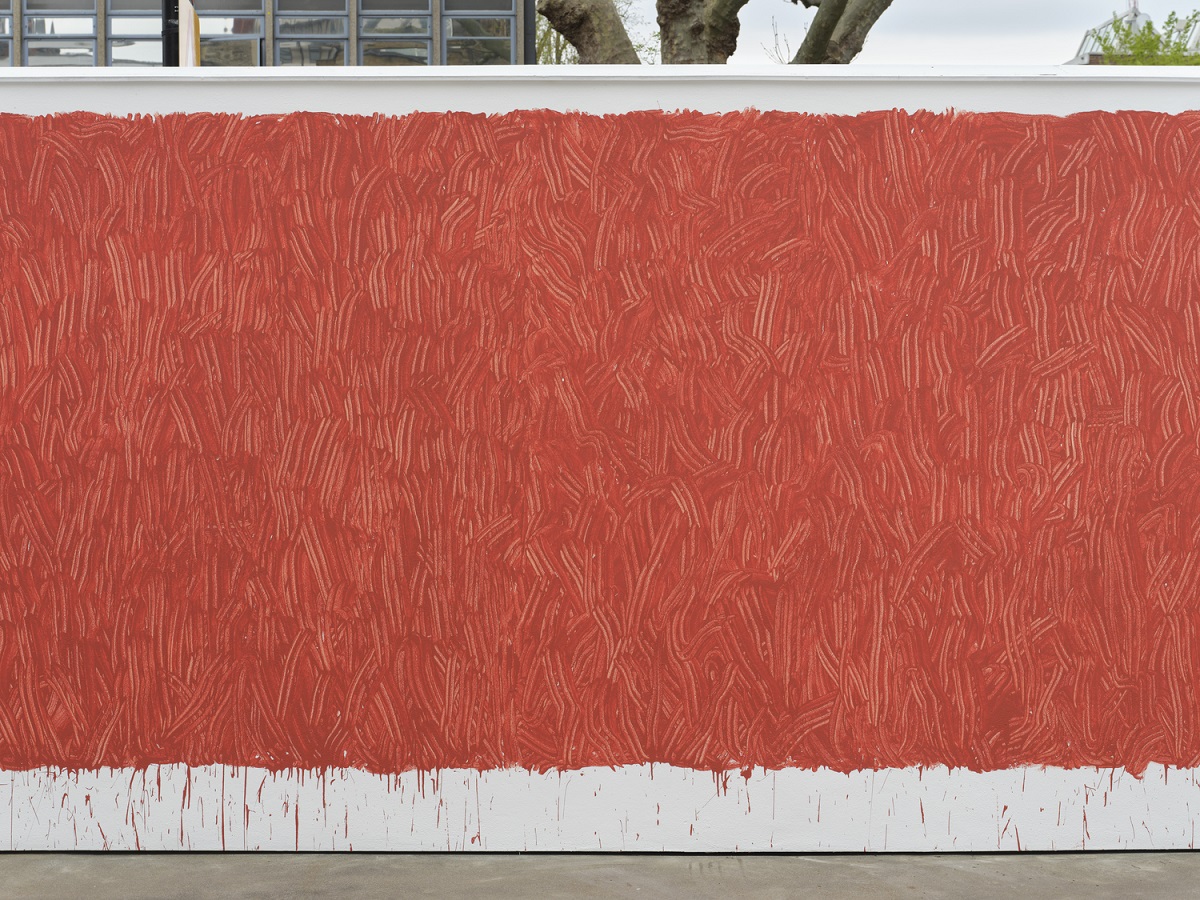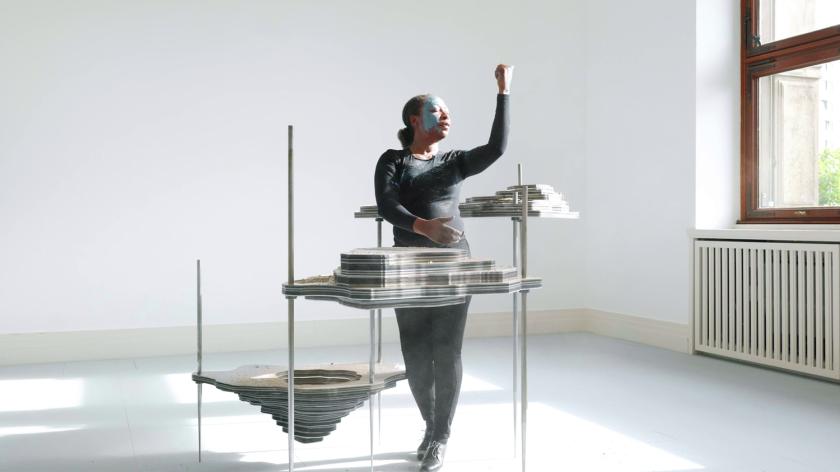 It is this notion that Nkanga’s performance solidifies. Accompanied by stunning tapestries and an installation of the excavated topography of Namibia’s "Green Hill", Solid Maneuvers (a portmanteau of "hand" and "oeuvre") speaks of the toll such laborious encounters with the land has on one man’s body (respiratory diseases, loss of hearing and premature death are all attributed to mining). Human landscapes become mapped onto geographical ones, as one individual’s trauma is in turn landscaped by the surrounding area.
It is this notion that Nkanga’s performance solidifies. Accompanied by stunning tapestries and an installation of the excavated topography of Namibia’s "Green Hill", Solid Maneuvers (a portmanteau of "hand" and "oeuvre") speaks of the toll such laborious encounters with the land has on one man’s body (respiratory diseases, loss of hearing and premature death are all attributed to mining). Human landscapes become mapped onto geographical ones, as one individual’s trauma is in turn landscaped by the surrounding area.
We see this, too, in Syowia Kyambi’s Entity Costume, 2011, which consists of a woven headdress and garment, and represents the ecological, economic, cultural and psychological violence of British colonialism on Black Kenyans and their land. Made with sisal cultivated in colonial plantations, Kyambi’s costume haunts the gallery space as it hangs, sans body and field, from the ceiling. Symbolic of the disinherited and disenfranchised Kenyans, this disembodied spectre of a weave takes the human predicament back to the very soil from which it has sprung. Sisal is, therefore, a material of oppression and protest, retaliation and reclamation, one that announces both the plight and power of Kenyan land and its indigenous peoples.
Dana Awartani’s work similarly explores the dual identity and potentiality of matter. If the stone facades of ancient buildings in Iraq and Syria can be aggressively acted on by terror groups, then matter too can be the active agent in its own reparative and restorative process. Using naturally dyed silk fabrics which have been saturated in medicinal herbs, Awartani sets about retracing,recording and repairing the modern wounds of ancient edifices. Darning and embroidering silhouettes of the “scars” inflicted upon stone, Awartani meets destruction with peace,brokenness with healing. Her tenderly dyed and handled fabrics thus become both an archive of trauma and a store of hope, recognising and reconstituting the very material strands and threads that make up the cultural history of the Arab world.
 Matter as preservation of the personal, as well as resistance to the political, is also evident in Richard Long’s mud spattered wall. Looking back to past works, like Red Earth Circle, 1996, Red River, 2023 (pictured above), centres Long’s love affair with the materials – clay, slate and mud – that have made his art so noticeably what it is. The downward force of the strokes of mud and paint suggest the rhythms and propulsive pull of water – perhaps of his "home river", the River Avon, which is a continual source of inspiration to him. In the visceral and gestural movement of Red River then, Long’s personal work flows out to the universal; to the surrounding socio-political and environmental themes running deep and imaginatively wild in the aforementioned artists’ works; to the precious materials used and abused, but here valued and handled with care, and finally to the most material subject of them all: us.
Matter as preservation of the personal, as well as resistance to the political, is also evident in Richard Long’s mud spattered wall. Looking back to past works, like Red Earth Circle, 1996, Red River, 2023 (pictured above), centres Long’s love affair with the materials – clay, slate and mud – that have made his art so noticeably what it is. The downward force of the strokes of mud and paint suggest the rhythms and propulsive pull of water – perhaps of his "home river", the River Avon, which is a continual source of inspiration to him. In the visceral and gestural movement of Red River then, Long’s personal work flows out to the universal; to the surrounding socio-political and environmental themes running deep and imaginatively wild in the aforementioned artists’ works; to the precious materials used and abused, but here valued and handled with care, and finally to the most material subject of them all: us.
- Matter as Actor at the Lisson Gallery until 24 June 2023
- More visual arts reviews on theartsdesk









![SEX MONEY RACE RELIGION [2016] by Gilbert and George. Installation shot of Gilbert & George 21ST CENTURY PICTURES Hayward Gallery](/sites/default/files/styles/thumbnail_125_x_125_/public/mastimages/Gilbert%20%26%20George_%2021ST%20CENTURY%20PICTURES.%20SEX%20MONEY%20RACE%20RELIGION%20%5B2016%5D.%20Photo_%20Mark%20Blower.%20Courtesy%20of%20the%20Gilbert%20%26%20George%20and%20the%20Hayward%20Gallery._0.jpg?itok=3oW-Y84i)





Add comment